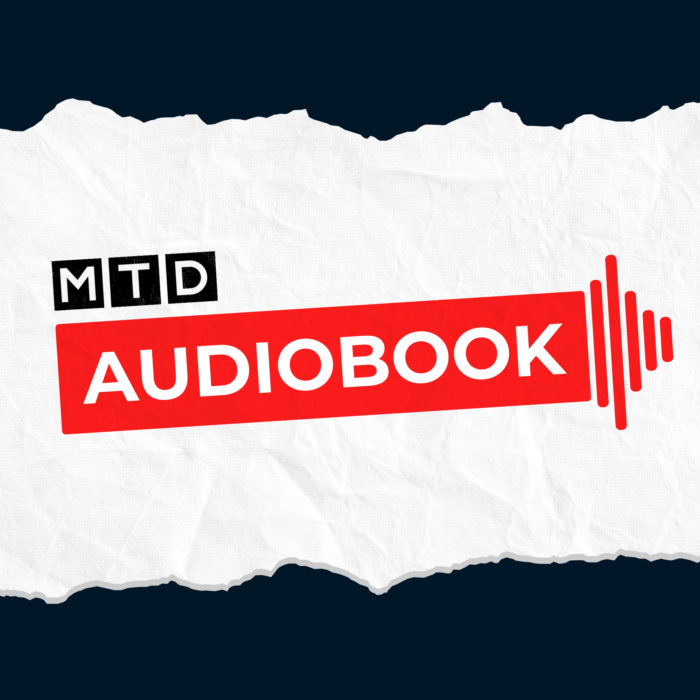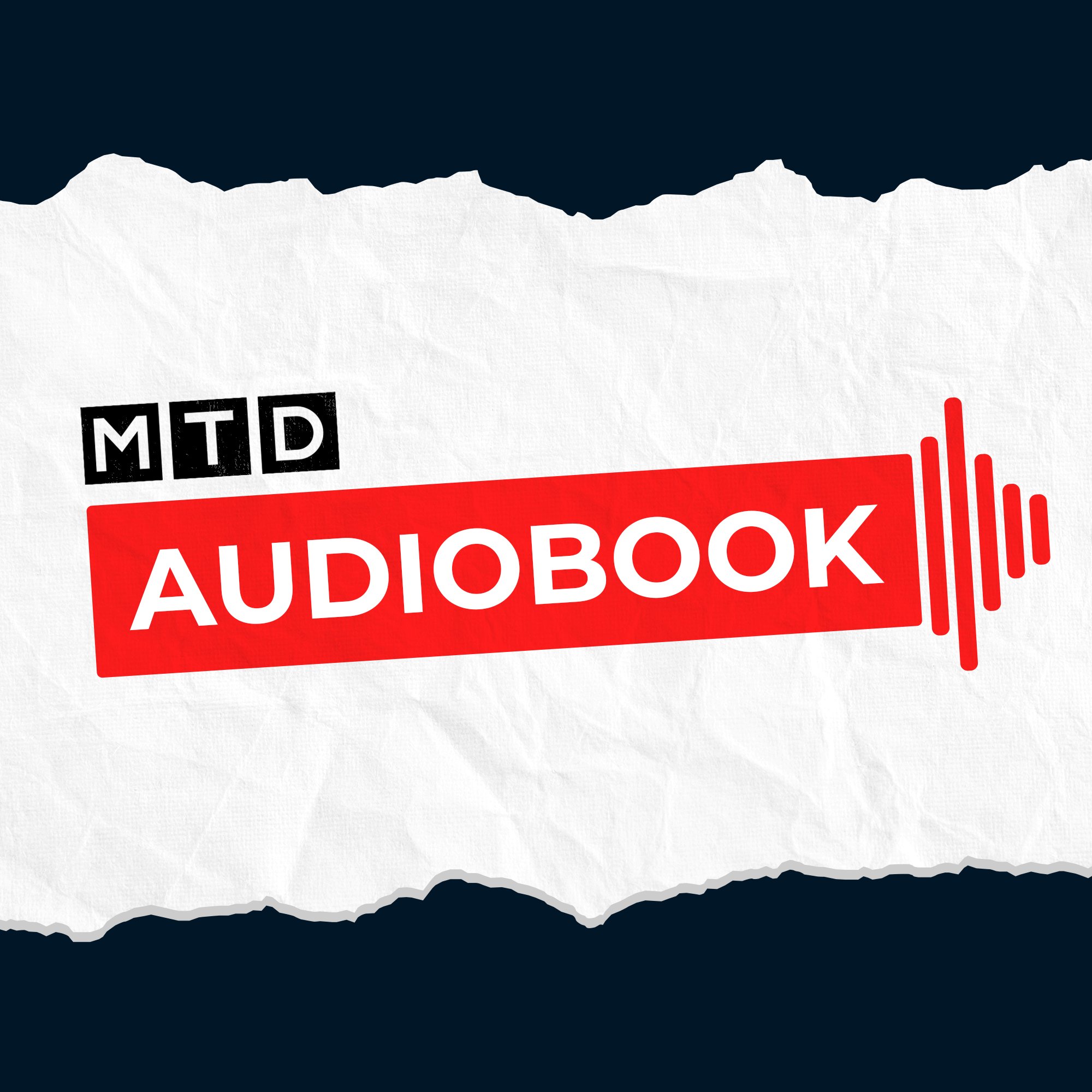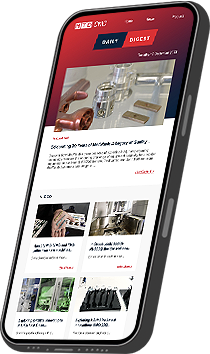
Advanced CT Scanning
Industry-leading computed tomography (CT) scanning technology provided by Nikon has been employed to uncover the secrets…

In the May issue, we featured our European trip with Ceratizit that took in the fantastic sights of Ruette, Kreckelmoos and Kempten in Austria and Germany to see the investment in new production sites, a new logistics facility and the brand new tech centre. In the run-up to the Autumn exhibition season with AMB and IMTS on the horizon, we take a closer look at some of the innovations shown during the tour that will be making an appearance at these September events. By Rhys Williams
The May issue of MTD magazine covered Ceratizit’s major investments, the sustainability targets and how they are being achieved. We also captured some of the new technology in the pipeline. This month, we take a closer look at the innovations that were put through their paces during the event – this is particularly pertinent as some will have been seen at MACH whereas others will be uncovered for the first time during the Autumn exhibition season.
Following an initial presentation, a tour of the Reutte manufacturing facility in Austria and a spot of lunch, our touring press party was invited to participate in technical demonstrations. These presentations covered everything from the sustainability journey and the roadmap for the future, additive manufacturing and of course the live machining demonstrations. The first demonstration conducted on a DMG MORI CTX1250 involved the turning of a steel billet with the use of the EcoCut multi-functional tool for face and profile turning.
Considered the ‘Swiss Army Knife’ in Ceratizit’s toolbox, Ceratizit customers will know that this range has been around for some time. However, the demonstration was of the new Dragonskin ISO-P steel grade launched in February. This new grade has proven to extend tool life by 15% under trials. Alternatively, users can increase their cutting data and retain the same longevity as their existing Ceratizit grades. An impressive start, but what came next was somewhat different…
Following the profiling of a billet with EcoCut was FreeTurn. Initially launched in 2019, this gem was a lightning rod innovation that won awards when it landed. However, machine tool manufacturers, CNC control manufacturers and CAM developers were somewhat caught napping with only OPEN MIND’s hyperMILL and a few machine tool brands having the capability to work with FreeTurn. Capable of making huge productivity gains and equally impressive tool life savings, this groundbreaker was waiting for the industry to catch up. While the industry has been catching up with High Dynamic Turning (HDT), Ceratizit went ahead and developed and evolved CERASmart – but we’ll circle back to that.
High Dynamic Turning (HDT) is now available with most CAM developers with CNC control manufacturers having some functionality, but still playing catch-up. Why is everyone starting to sit up and pay attention? Well, FreeTurn can increase feed rates by 40%, reduce ‘air-cutting’ toolpaths by 90% and reduce machining times by at least 25%. However, to take advantage of this, manufacturers need a turning centre with a Y-axis milling spindle and an HSK-T or PSC interface.
Running Free With Innovation
Ceratizit ran FreeTurn on the DMG MORI CTX1250 TC as it fulfils all the requirements of HDT. It is both HDT-ready and counts among the most commonly used turn/mill centres on the market. “This means we can confirm that it’s already possible for many manufacturing companies to use HDT and FreeTurn,” explains Product Manager Paul Höckberg.
The component, the base body of an indexable insert drill was optimised and entered using the Siemens Sinumerik 840D control system and a 5-axis simultaneous cycle from OPEN MIND, resulting in astounding cutting speeds. Just to highlight the benefits of this demo – It ran at a cutting speed of 220m/min, a feed of f0.48mm/rev and a depth of cut ap 4mm. During finishing, a cutting speed of 400m/min was applied. “We knew our FreeTurn was good, but we never thought it was possible to machine structural steel (X40CrMoV51) at such high cutting speeds,” marvels Höckberg.
Instead of using three different tools that would usually have been required, the component is now produced with only one FreeTurn tool, saving the use of two tools and reducing the production time from 5:10 to 2:45 minutes.
For manufacturers that can see the merits of this technology, Ceratizit has developed CERASmart – a system that enables manufacturers to quickly and easily generate NC code to create tool paths for HDT with FreeTurn tools….and much more! This ‘plug and play’ system can be installed on a PC or directly to a machine tool CNC and customers can then import DXF files to the software. CERASmart permits dialog-based programming and generation of standard NC code for machines regardless of component complexity and it also allows the dynamic cutting angle adjustment for tool paths along the component contour. With Ceratizit tool data pre-defined in the software, optical simulation and optimisation of tool paths and movements are available in the software without requiring a 5-axis ‘option’ that is normally needed for simultaneous turning.
The CERASmart software for HDT FreeTurn programming is not available to download yet, but Ceratizit expects this to be available for the autumn exhibition season. Why should you be looking at it? If you are heavily involved in turning, the benefits of HDT and FreeTurn have already been emphasised, but concerning CERASmart, it now incorporates HDT with FreeTurn tools specifically for customers to take full advantage of. It allows shop floor programming without CAM and integrates smoothly without interrupting existing programming processes. Furthermore, it incorporates collision avoidance via its simulation and optimisation capabilities and this is all available at a minimal investment when compared to a full CAM solution. The demonstration on the DMG MORI machine was concluded with the FreeTurn tool being replaced by the MaxiMill Slot-SX grooving, parting and slotting system.
Moving to a Mazak MTV815/15 machining centre, the Ceratizit team presented the MaxiMill extended flute porcupine cutter that ran at a cutting speed of 160m/min at a feed rate of 50mm/rev. Utilised by Airbus in France for titanium structural parts, both the Ceratizit engineers and the MaxiMill tool were not shirking away from the challenge of cutting P35 steel in anger. The demo part then underwent slotting and shoulder milling with the MaxiMill 211-15 Shell Mill at a cutting speed of 180m/min before the MaxiMill Shell End Mill was applied to complete the part with helical milling and contouring.
Heading off the shop floor to the solace of a quiet meeting room, Ceratizit then presented more of its latest cutting tool innovations. This included the new MaxiLock N-DC introduced to the industry in February. The (DC) DirectCooling product range has now been added to the MaxiLock-N turning tool holders and this provides two coolant holes that aim coolant directly at the cutting edge, preventing wear and ensuring stable processes.
With three nozzles aimed at the clamping flat of the turning tool from above, another is directed at the flank from below – specifically at the cutting edges. This targeted cooling system is suitable for all materials, although it delivers advantages with ISO-P, M and S in particular due to the rapid heat development in the cutting process. “It is precisely this flank cooling that makes the difference. It extends tool life by 60% compared to cooling that is exclusively aimed at the clamping flat,” explained Stefan Karl, Product Manager of Cutting Tools.
This (DC) DirectCooling has also been added to the Ceratizit range of tried-and-tested MaxiLock-S turning tools. Similar to the MaxiLock-N, the MaxiLock-S holders feature two internal holes ensuring that the coolant is applied precisely to the cutting edge. One hole targets the rake face from above and the other hits the flank from below. Again, this flank cooling system is said to boost service life by 60% compared with cooling exclusively on the rake face.
The final tooling innovation for the day was the Multilock exchangeable head system. Ceratizit customers will know the name has been around for several years, however, the company now offers both steel and carbide tool bodies with exchangeable heads, now offered as precision sintered cutting heads that are not ground. The benefit is a reduced manufacturing cost that is passed to customers who can now acquire reduced-cost sintered cutting heads whilst retaining performance characteristics. The application of carbide and sintering processes was particularly pertinent considering our next presentation.
Turning the impossible to…
….making the additive printing of cemented carbide products possible. Demonstrating its position as a pioneer in carbide research and production, Ceratizit analyses trends to offer optimal solutions. It has now developed additive manufacturing technologies for its cemented carbide grades that enable it to offer carbide-manufactured parts with unlimited design possibilities. The 3D printing of carbide products delivers technological possibilities to overcome design limitations and create designs with minimal batches. Offering simulation and modelling, design adaptation and material selection support, Ceratizit can take manufacturers from the ore to the ready-to-use tool.
With the facility to print every cemented carbide grade from coarse to ultrafine and offering a complete variety of binding agents and levels of binder content, Ceratizit can manufacture everything from wear-grade carbides to grades for cutting tools. Utilising a complete range of printing technologies to provide maximum flexibility with both the powder and binder composition, the design freedom, turnaround times and scalability of production volumes are making this technology a genuine opportunity area.
And of course, there are the environmental benefits. During a presentation, Dr Manuel Walch discussed a formed tool from a sintered block that required EDM processing to attain the final net shape. This example highlighted how eroding a form tool from a carbide block with a weight of 574g required erosion of starter holes, cavity cutting, the removal of scrap and re-wiring the wire EDM machine. With all this effort, the process left 341g of scrap whereas a 3D printed carbide form tool could be printed near net shape with a weight of 260g requiring a finishing cut that resulted in just 28g of scrap. With a material saving of more than 60% over conventional methods, it is evident why Ceratizit is pursuing this route.
Building for the Future
On the final day of the tour, the press delegation crossed the border to Kempten in Germany where we visited the brand new sales and technical centre. When I say ‘brand new’, this site opened on a Monday and we toured it on Wednesday. Some of the staff in this facility with 5,000m2 of meeting rooms and 725m2 of tech centre hadn’t yet learnt where the bathrooms were.
The second tech centre of the tour was of course filled with brand new machines and the first set of demos was conducted on a DMG MORI DMC90 U. This provided an opportunity to showcase the WTX-TB UNI 50XD deep hole drills. Available in diameters from 0.8 to 2.9mm, the WTX micro-drills may be a name familiar to customers who have previously purchased 5XD to 20XD variants and the more recently introduced 25XD and 30XD drills. However, pushing the envelope even further, Ceratizit showcased the new 50XD drill. Anybody applying 50XD micro drills can appreciate the potential for drill breakage, so this was an opportune moment to give the audience a demo of its ToolScope suite that sits within CERASmart to measure everything from the tool load and cutting parameters to machine usage, hours, number of stops, the programmes running, alarms and usage by specific tool – and much more.
Trochoidal milling followed with the CCR-UNI 5XD tool and then came the revelation that the next tool was manufactured from 99% recycled carbide substrate. The ProACT-Mill UNI solid carbide milling cutters are a new independent upGRADE product line of universal milling cutters that combine performance with sustainability. The ProACT-Mill features the same performance as all-around high-performance milling cutters with the most sustainable carbide substrate, providing an economic and ecological advantage. You’ll be able to discover more during the autumn exhibition season on these tools.
Circular Economy
The new recycled ProACT milling line is supplied with data matrix codes on the tools and this connects to the ToolCycle module that feeds back to the previously mentioned CERASmart suite that has the facility to provide the entire life-cycle of the tool via its ‘digital twin’. Within the CERASmart suite sits ToolScope which has been available for several years. Like any software platform, if it receives the right level of investment and innovation the growth can be exponential. Now, the system offers complete process monitoring of tools and with fast-acting mechanisms, tool defects can be detected and machining stopped before any tool is damaged.
ToolScope collects, displays and evaluates data and detects deviations in real-time, allowing customers to intervene in production processes. The machine condition is also monitored for maintenance purposes, making ToolScope act like an airbag inside the machine. It also prevents overloading of the tool and the machine with data recorded for full tool service life analysis. ToolScope incorporates process monitoring, wear detection, adaptive feed control and collision detection, and with functions individually tailored to the customer, tool life improvements and cycle time reductions are easily achievable. Ceratizit is continually evolving the system and it has now introduced a series of iTENDO hydraulic toolholders with sensors that can communicate directly with ToolScope to enhance the feedback loop and machining performance further.
As a critical element in the overall CERASmart suite, ToolScope is an impressive data collection tool that feeds back to CERASmart which itself has been expanded to incorporate data from ERP systems, tool and quality management systems and also ToolCycle. This central portal of information is an Industry 4.0 solution that enables customers to collate data to make better-informed decisions, automate and streamline processes and also create a feedback loop with experts from Ceratizit. A fascinating system, Ceratizit is continually evolving this portal and the HDT FreeTurn programming suite is just one in a long pipeline of innovations to come.

Stay up to date with the latest industry news and events.

Be first to see all the updates from MTDCNC
Our newsletters frequency varies dependant on content
All the latest deals from the industry feature on our newsletters